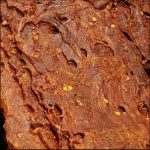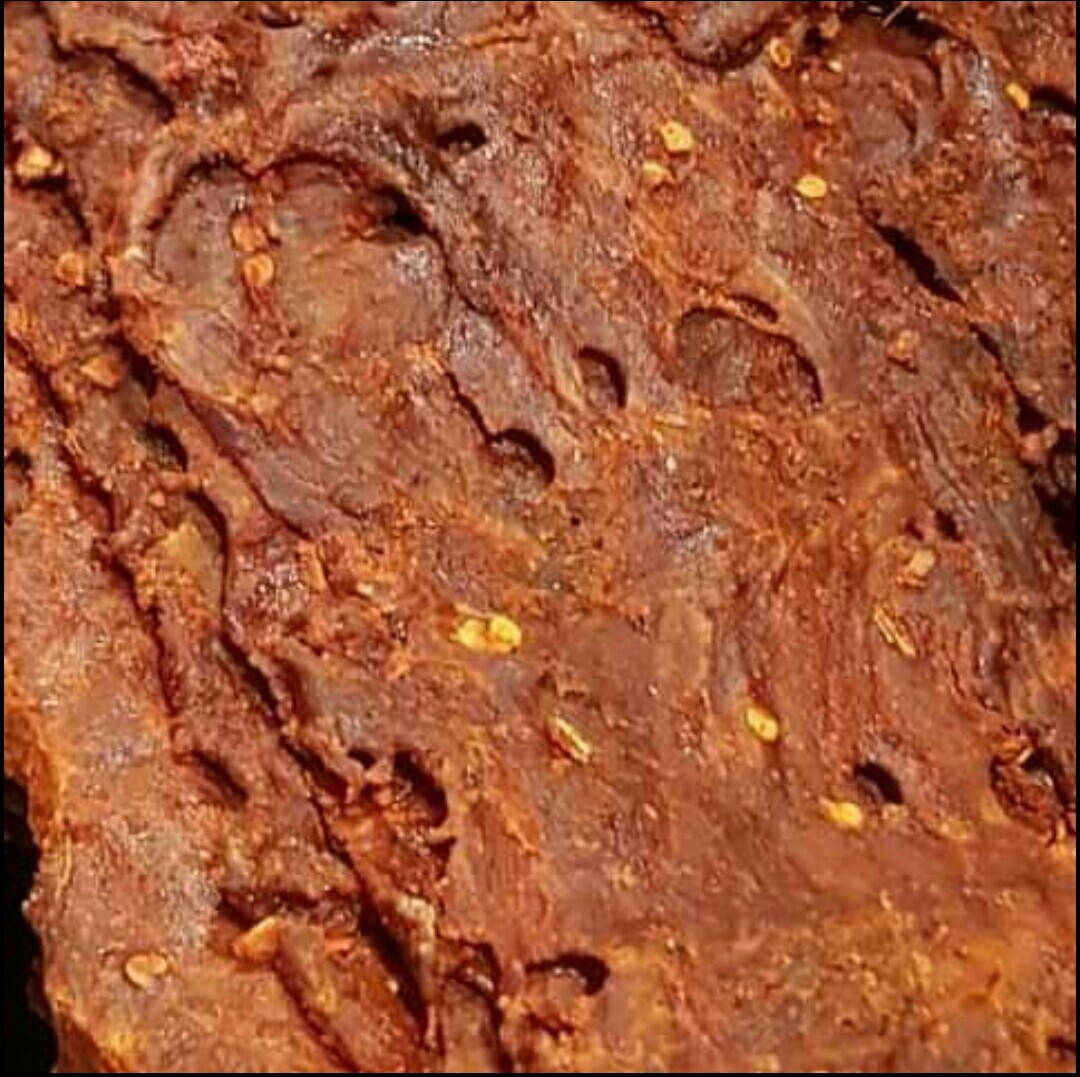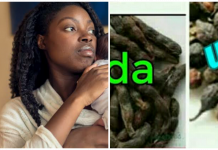What do I buy for you when I am coming back from Abuja? Every Nigerian knows the response – kilishi.
Kilishi is the family member of Suya that had a longer time getting dried or smoked with heat. While Suya contains sliced pieces of meat, the beef used for Kilishi is dried, flat seasoned beef that can be broken with hands.
Kilishi meat is a staple food that most Nigerians enjoy because of its unique taste, low fat content, nutritional value. It is a form of lean meat enjoyed by both young and old including diabetics. It is a meat snack famed for its ability to stay for months without losing its taste.
Origin
It originated from the Hausas. According to Wikipedia, the Hausas are a diverse but culturally homogeneous people based primarily in the Sahelian and the sparse savanna areas of southern Niger and northern Nigeria respectively, numbering over 70 million people with significant indegenized populations in Cameroon, Central African Republic, Republic of the Congo, Ivory Coast,Chad, Togo, Ghana, Sudan, Eritrea, Equatorial Guinea, Gabon, Senegal and the Gambia. Any where you see a Hausa community, be rest assured that you will find this meat snack.
Kilishi came as the tribe’s effort to store excess meat especially those days where there was no storage system and the nations unending lack of stable electricity. Kilishi can therefore be described as a product of innovation. It is the north’s gift to Nigeria and the World. It is source of revenue to many northerners and some folks down south.
Source of Kilishi
It is a form of dried suya. The jerky meat is gotten from deboned cow, sheep, goat, donkey, camel, and sometimes horse. Each of the selected muscles is sliced into sheets of one metre or less for easy sun drying. The dried sheets of meat are then collected and kept for the next process.

Recipe for Kilishi
According to Wikipedia, a paste made from peanuts, called labu, is diluted with enough water, spices, salt, ground onions, and sometimes sweeteners such as honey, to add sweetness. A more natural way to add sweetness is by adding date palm. The dried “sheets” of meat are then immersed one by one in the labu paste to coat them, before being left to dry for hours before roasting on a wire mesh.
Ingredients you need for Kilishi
According to All Nigerian Recipes, thes are the list of ingredients for making the Nigerian beef jerky.
- 10 pieces wafer-thin beef
- 1 tablespoon suya spice (suya pepper)
- 3 cloves of garlic
- 1 teaspoon cloves (Kanafuru)
- A small piece of ginger
- 1 small stock cube
- ¼ teaspoon salt
- 1 teaspoon dry cayenne pepper seeds
- Date palm
- Honey
- Onions
- Good heat
Nutritional value
The Nigerian beef jerky is a high protein diet, high in calories (297kcal) , no fibre, no vitamins, no unhealthy fats, contains some minerals but no vitamins. Though a delicacy, it is of low nutritional value compared to suya. Processing of beef into Kilishi appears to lead to a decrease in mineral availability. Check the table below from a summarized version of the calorie content and nutritional value of kilishi
| Total calories | 297 kcal |
| Carbohydrates | 8 g |
| Total fat | 4 g |
| Saturated fat | 0 g |
| Polyunsaturated fat | 0 g |
| Monounsaturated fat | 0 g |
| Trans fat | 0 g |
| Fiber | 0 g |
| Protein | 49 g |
| Sugars | 0 g |
| Cholestrol | 0 mg |
| Sodium [Na] | 19 mg |
| Salt | – |
| Magnesium [Mg] | – |
| Manganese [Mn] | – |
| Potassium [K] | 0 mg |
| Folate | – |
| Iron [Fe] | 0% |
| Vitamin A | 0% |
| Vitamin C | 0% |
| Vitamin K | – |
| Vitamin E | – |
| Vitamin B12 | – |
| Vitamin B6 | – |
| Vitamin D | – |
| Vitamin D (IU) | – |
| Vitamin B3 [Niacin] | – |
| Vitamin B1 [Thiamin] | – |
| Phosphorus [P] | – |
| Zinc [Zn] | – |
| Calcium [Ca] | 0% |
| Caffine |
Table showing the nutritional value of the Nigerian beef jerky. Credit: Wikicalories
Health benefits
Kilishi is a rich source of protein, contain no fats and therefore suitable for diabetics. It is good for snacking.
How is it served?
Prepared with mixed spices, Kilishi can be taken alone as a snack, or with a cup of ice cold soaked garri. I like taking it with a cold and chilled malt. The new trend is to package it in a very attractive way.
Where can you get kilishi?
It is sold across the 36 states of the federation including Abuja. Mai suyas of the Nigerian lean meat kilishi, makes a lot of sales in Lagos, Abuja, Lokoja, Ore, and in many city centres. You can get kilishi from Asia low as 500 Naira to as high as #20,000 depending on your pocket. You can also hire Mai suya to make the beef jerky for your parties or functions.
Hazards/dangers/side effects of kilishi
There has been growing concerns of the health risk associated with the consumption of Kilishi mainly because it is prepared in the most unhygienic and appalling conditions or environment. The production of Kilishi exposes the meat to contamination from flies, rodents, humans and insects. Medical doctors have expressed worry that high consumption of red meat (beef) may increase one’s chances orrisk of getting cancer
In 2015, the World Health Organization (WHO) warned that Nigeria’s most patronized barbeque, SuyaandKilishi, can cause cancer. Excessive beef consumption may lead to hypertension, cardiovascular disease and stroke.
Not cooking the meat properly before eating may put consumers at risk of contracting diseases like taeniasis (Taenia Saginata, tape worm infestations). Tape worm infestation can cause you abdominal discomfort, vomiting, muscle aches, headaches, dizziness, seizures and in extreme cases intestinal obstruction.
Because it is prepared in unhygienic conditions kilishi can be a cause of food poisoning.
Fake Kilishi
There have been news of fake and rubber kilishi in circulation in the Nigerian market. In about a minute video, a woman took her time to inform Nigerians about the presence of fake beef jerky and how to differentiate between fake and original kilishi. Watch the video below….
Sources:
Wikipedia
Pulse
All Nigerian Recipe
Legit

























Nice one man keep it up